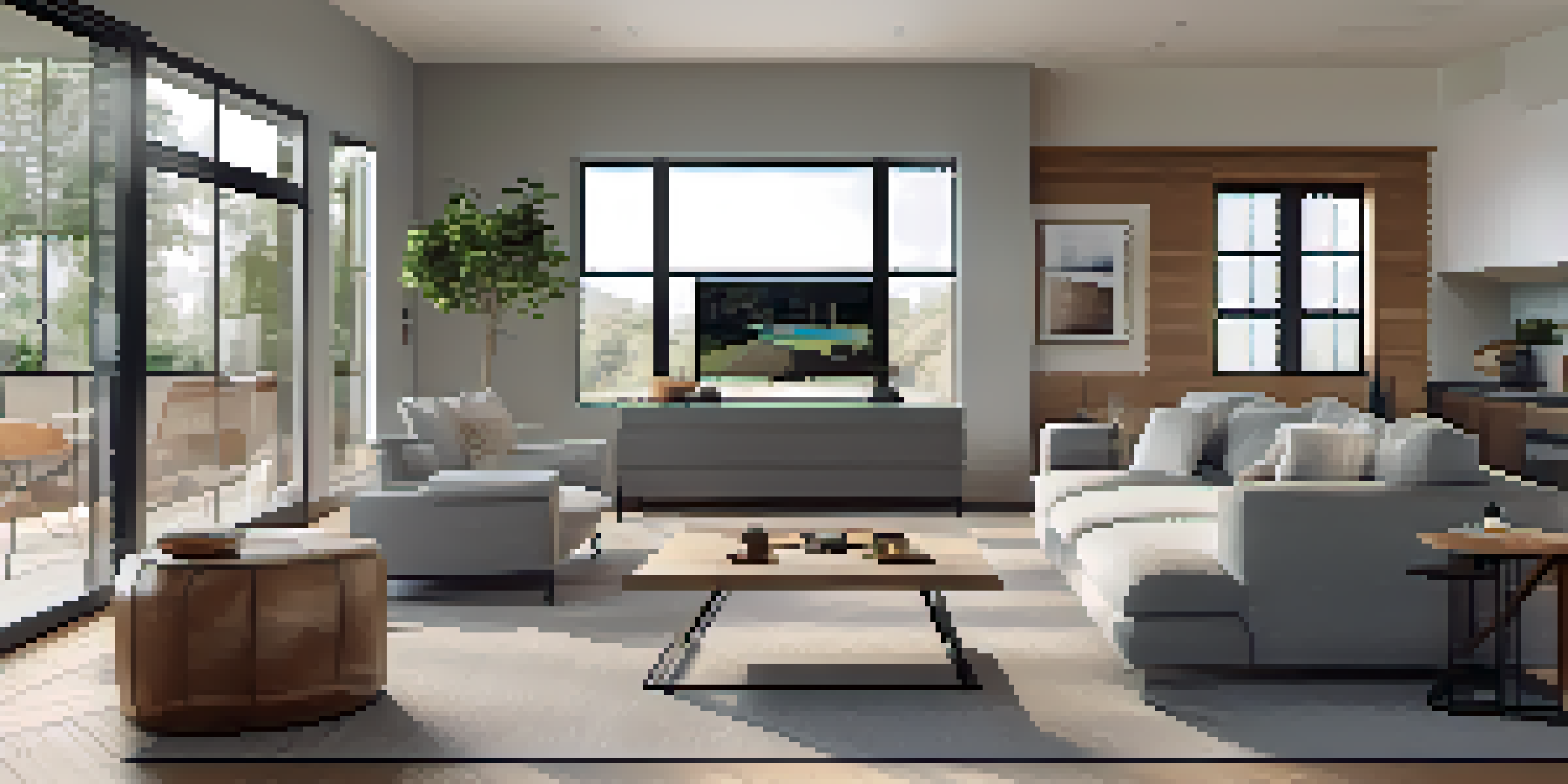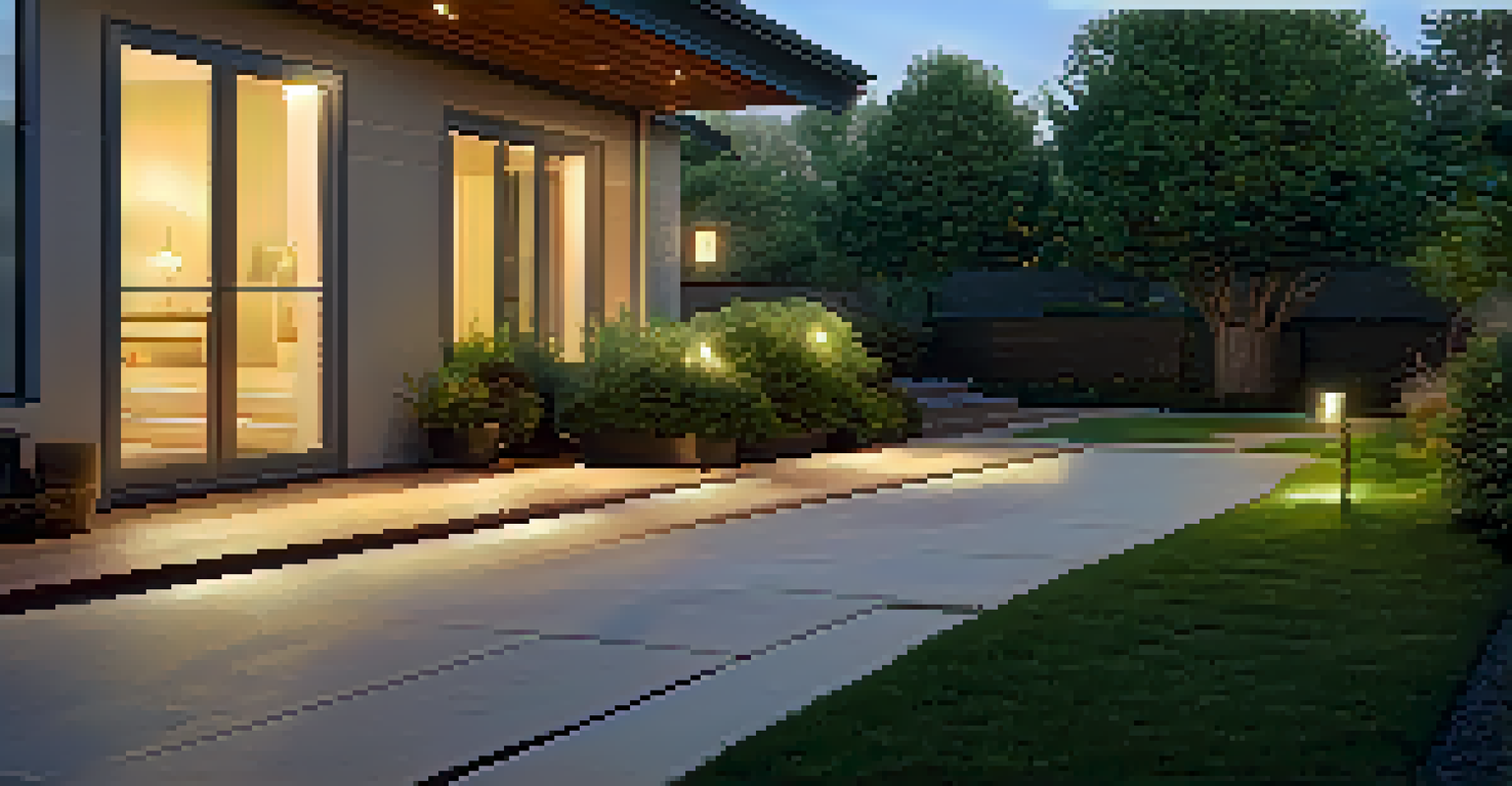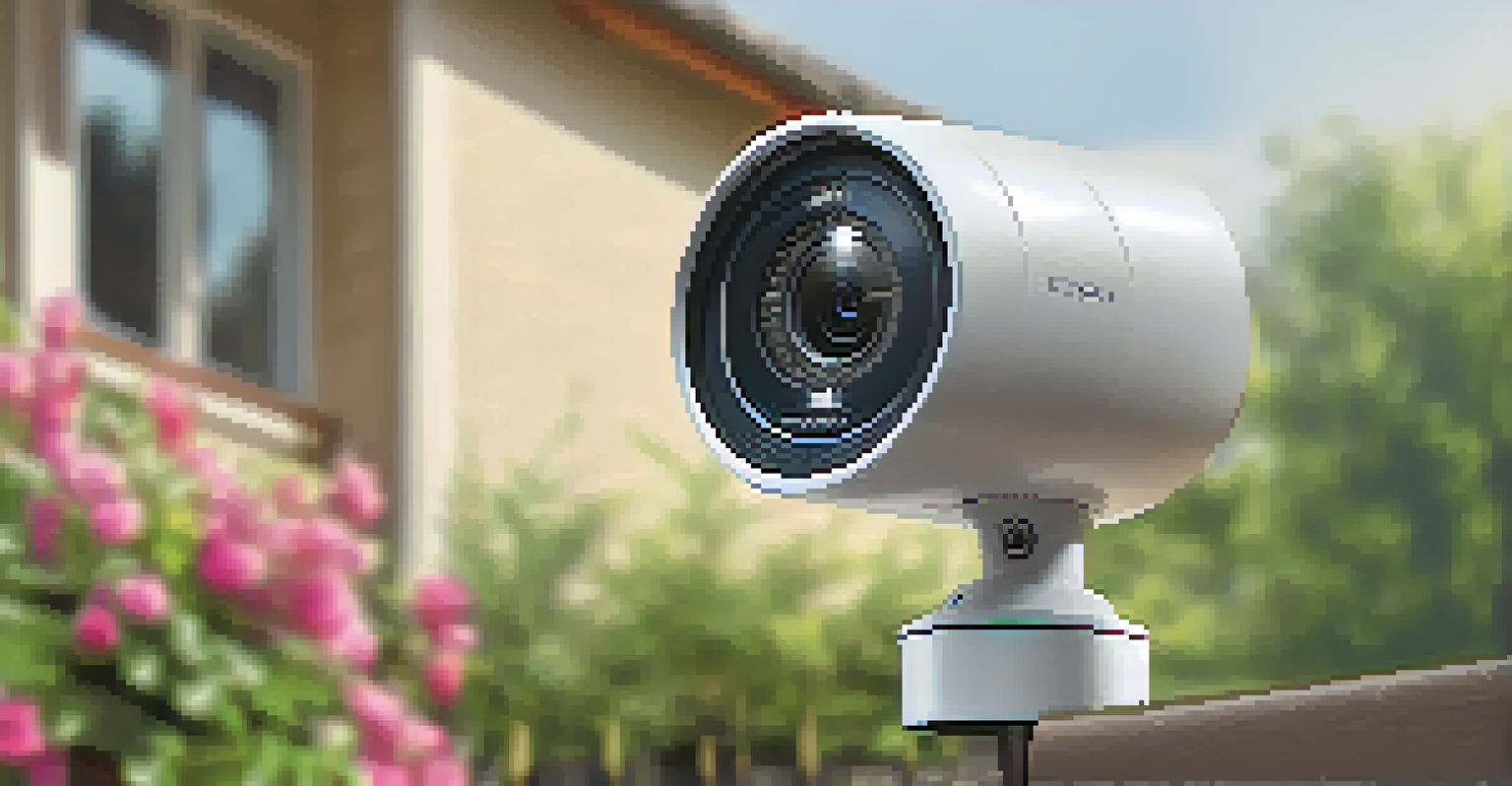Automating Home Security: Smart Cameras and Sensors

Understanding the Basics of Smart Home Security
Smart home security systems combine technology with everyday safety, making it easier to monitor your home. At the core of these systems are smart cameras and sensors that allow homeowners to keep an eye on their property from anywhere. Imagine being able to check your home's status right from your smartphone, whether you're at work or on vacation—it’s a game changer for peace of mind.
The future belongs to those who believe in the beauty of their dreams.
These devices work together to create a comprehensive security network. For instance, smart cameras can capture video footage while motion sensors alert you of any unusual activity. This interconnectedness means that you’re not just relying on one type of technology but rather a suite of tools designed to enhance your safety.
Moreover, smart home security systems can often be integrated with other smart devices in your home. For example, if a sensor detects movement, it can trigger your smart lights to turn on, illuminating your property. This synergy among devices not only boosts security but also enhances convenience.
Choosing the Right Smart Cameras for Your Home
Selecting the right smart camera can feel overwhelming given the wide array of options available. Start by considering what features are most important to you, such as video quality, night vision, and two-way audio for communication. For instance, a camera with high-definition video capability ensures you can see details clearly, which is essential for identifying faces or license plates.

Another aspect to consider is connectivity. Many smart cameras connect to Wi-Fi, allowing for remote access through mobile apps. It’s crucial to choose a camera that offers reliable connectivity, as interruptions could mean missing out on important footage or alerts when you need them most.
Smart Security Enhances Peace of Mind
Smart home security systems allow homeowners to monitor their property remotely, providing reassurance whether at work or on vacation.
Additionally, think about the installation process. Some cameras are designed for easy DIY setups, while others may require professional installation. Weighing the pros and cons of each option can save you time and frustration, ensuring you choose a camera that fits your lifestyle and technical comfort level.
The Role of Motion Sensors in Home Security
Motion sensors are vital components of a smart security system, acting as the first line of defense against intruders. These devices detect movement within a designated area, triggering alerts to your smartphone or security system. Picture this: you’re at home, and the motion sensor detects movement outside—immediate notifications keep you informed and ready.
Security is not a product, but a process.
There are various types of motion sensors, including passive infrared sensors that detect body heat and dual-technology sensors that combine different detection methods. The latter minimizes false alarms, such as those caused by pets or passing cars, ensuring you only receive alerts that matter. Choosing the right type for your environment can significantly enhance your security experience.
Moreover, motion sensors can work in tandem with other smart devices. For example, when a motion sensor is triggered, it can also activate smart lights, illuminating the area and potentially scaring off intruders. This layered approach not only improves security but also creates a convincing illusion of occupancy when you’re away.
Integrating Smart Cameras with Home Automation
The beauty of smart cameras lies in their ability to integrate with other home automation systems. This means you can control everything from security cameras to lights and thermostats from a single app. For example, if your smart camera detects movement, it can automatically lock your smart door, adding an extra layer of security.
Integration also means enhanced functionality. Many smart cameras now come equipped with features like facial recognition, allowing you to distinguish between family members and strangers. This added intelligence not only increases security but also provides convenience, as you can set up alerts for specific individuals.
Integration Boosts Home Security
Integrating smart cameras with other home automation devices enhances functionality, creating a more secure and convenient living environment.
Furthermore, integrating your security system with voice assistants like Amazon Alexa or Google Assistant makes it even easier to manage. Just imagine saying, 'Show me the front door camera,' and having it pop up on your smart TV. This seamless interaction brings a new level of ease and efficiency to home security management.
Remote Monitoring for Peace of Mind
One of the standout features of smart home security systems is remote monitoring capabilities. With just a smartphone or tablet, you can check in on your home at any time. Whether you're at work or traveling, having the ability to view live feeds from your smart cameras brings peace of mind, knowing that you can keep an eye on things.
Most smart camera apps provide real-time alerts and notifications, which means you’re always informed of any suspicious activity. For instance, if your camera detects movement at an unusual hour, you'll receive an instant alert, allowing you to take action if necessary. This immediate feedback can be crucial in preventing potential break-ins.
Additionally, many systems offer cloud storage options for video footage, allowing you to review past events whenever you need to. This feature can be invaluable for documenting incidents and providing evidence if needed. Overall, remote monitoring transforms how you perceive home security, offering control and reassurance.
The Importance of Data Privacy and Security
As we embrace smart technology, data privacy and security must also be a top priority. Smart cameras and sensors collect a wealth of personal information, which can be vulnerable if not managed properly. Ensuring that your devices have strong security features, like encryption, is essential for protecting your data from unauthorized access.
When setting up your smart security system, take the time to change default passwords and enable two-factor authentication. This adds an extra layer of protection, making it more difficult for outsiders to gain access. For example, a unique password combined with a verification code sent to your phone can significantly reduce the risk of hacking.
Data Privacy is Crucial
As smart home technology collects personal data, ensuring robust security measures and regular updates is vital to protect against unauthorized access.
Moreover, regularly updating your devices’ firmware is crucial in maintaining security. Manufacturers often release updates to patch vulnerabilities and enhance features. By keeping your devices up to date, you can enjoy the benefits of smart security while minimizing risks.
Future Trends in Home Security Automation
The future of home security automation is bright, with rapid advancements in technology paving the way for more sophisticated systems. Emerging trends include the use of artificial intelligence (AI) to enhance threat detection, making systems smarter and more reliable. For instance, AI can help differentiate between normal activity and potential threats, reducing false alarms.
Another exciting trend is the integration of smart home security with other smart home devices. Imagine a scenario where your security system can communicate with your smart thermostat, adjusting the temperature automatically when you leave home. This not only improves security but also enhances energy efficiency.

As technology continues to evolve, we can also expect to see more user-friendly interfaces and features that prioritize convenience. Voice commands, automated alerts, and seamless integration with daily routines will make smart security systems even more accessible. Embracing these innovations will empower homeowners to take control of their safety like never before.